What Happened to Jacob Gray?
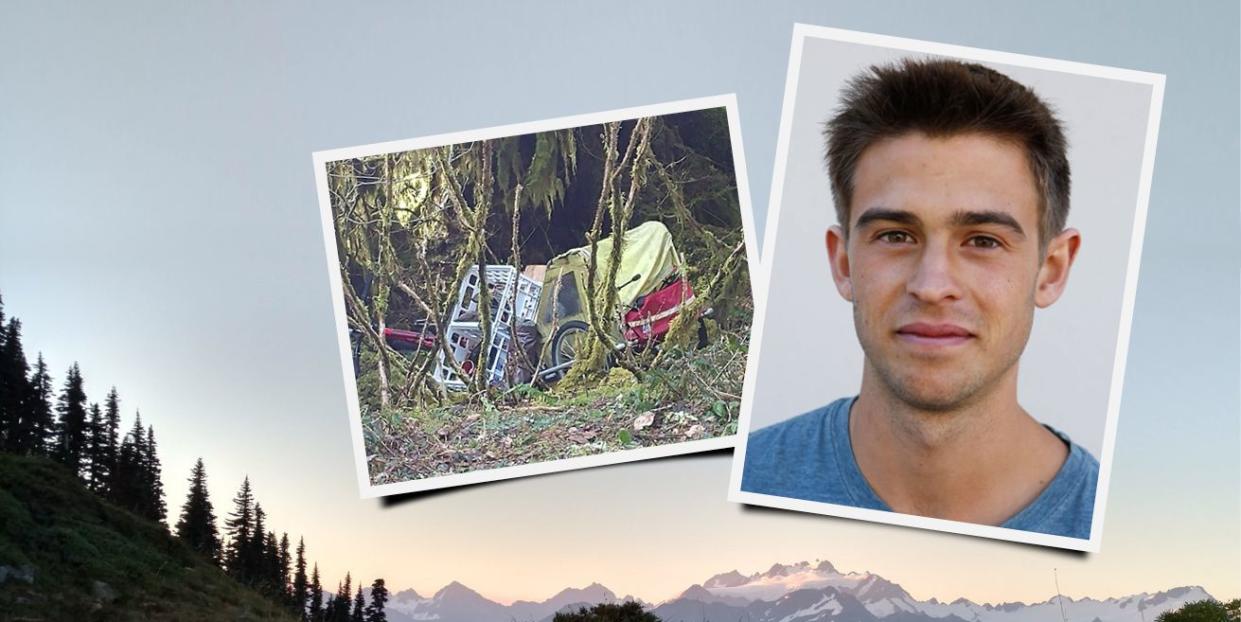
The bike was heavy and too small for Jacob’s 5’11’’ body. The red Specialized Hardrock sported the words “Milwaukee Tools” on its frame. It was a promotional bike that his dad, Randy, had won in a raffle at a contractors’ show. Jacob Gray-handy with a Skil saw like his house-builder dad-fashioned a plywood rack behind the seat and bolted two milk crates to it side-by-side. The flat rattrap pedals fit his running shoes or hiking boots. The bike was not built for speed, not pretty, but it was tight and as utilitarian as a pickup truck.
Jacob’s preferred store for camping gear was the Port Townsend, Washington, Goodwill. He loaded his secondhand yellow-and-red Burley child trailer with pots, pans, wool blankets, a roll of duct tape, a toolbox, stove, deck of cards, a Holman Bible, a tent, fuel bottles, a case of Mountain House dehydrated meals, two first-aid kits, carabiners, climbing crampons, a bow and quiver of arrows, a rain poncho, sleeping bag, and enough tarps, rope and bungee cords for a one-ring circus. The bike, trailer, and supplies weighed more than the 145-pound 22-year-old did soaking wet.
The weather was snotty in northwestern Washington in early April, but that didn’t slow him down. Jacob, a good surfer who grew up on the beach in Santa Cruz, California, is ionized by water, whether surfing on it or riding in it, his father Randy says. “Even if we don’t go surfing, we’ll get a mocha and go down to the beach and watch the sunrise. That’s our thing, Jacob and me.”
Jacob had nowhere he had to be, and all the time in the world to pedal there. He didn’t tell anyone where he was going, not even Wyoma Clair, his grandmother, with whom he’d been living in Port Townsend. He just lit out into the headwind and rain sometime in the night of April 4, 2017.
Missing
There were a few reported sightings, mostly credible, but not very helpful. A man claimed to have seen Jacob twice in Indian Valley and along Crescent Lake on April 5. A woman reported having seen a man towing ‘a red trailer’ climbing Fairholm Hill at one-o’clock in the morning the next day. Later that morning, April 6, a different woman passed Jacob as he churned up the Sol Duc Hot Springs Road, about two miles from the 101. Later that afternoon, coming down-mountain, she noticed the rig on the side of the road 6.3 miles up-river from the 101; she was curious enough to snap a quick photo of the abandoned contraption, a flash of red and yellow against the green of the forest. It wasn’t a good place to camp or stash a bike for long; it was highly visible not ten yards from the road, twenty from the river.
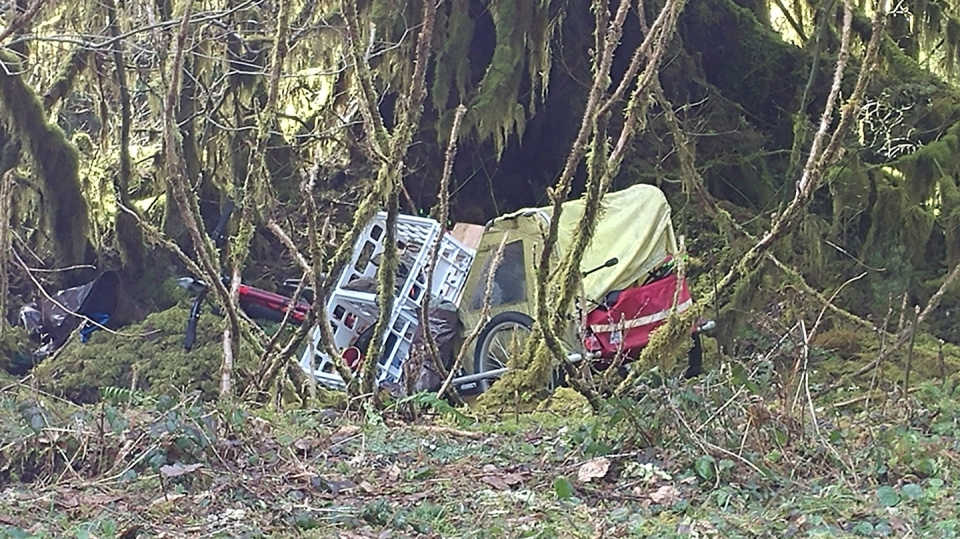
A ranger recalled having seen the bike and gear, but just figured the rider was on a short excursion on foot. No one gave it much thought. Touring cyclists are common in the area and Jacob was just the first robin of spring.
It appeared that he-or someone-had been organizing gear because a poly tarp was spread out surrounded by camping equipment. Was Jacob wet, cold, tired and hungry? He was 80 miles from his grandmother’s house; was he miserable and discouraged? Or was he totally in his element, feeling the highs of discovering a new independence? Oddly, there were four arrows stuck in the ground in an east-west line near the tarp. Why were they stuck in the ground? Was it some sort of sign for people who would come upon the bike?
A person isn’t missing until he’s reported missing. Even then, going missing isn’t a crime or even an emergency if the missing person is over 18. In this case, no one reported Jacob missing at all. Unlike hikers and runners, vanished cyclists are rare. But the fact that the bike remained untouched for most of a day made rangers curious. On the afternoon of April 6, Ranger John Bowie checked the area around the bike. Maybe the cyclist had made the short bushwhack to the river to filter some water; if he slipped in and couldn’t get out, he would have surely succumbed in the sub-40 degree water. Maybe the rider hitchhiked up to the hot springs. Bowie called his fellow officer Brian Wray and asked him to recheck the area the next morning. But the bike and trailer were still there.
Rangers looked around. At the time they didn’t think there was much they could do other than kick through the ferns for evidence of any sort, and walk the river banks, looking for something washed up or snagged in the logjams.
They didn’t have much to go on, other than an abandoned bicycle. Jacob’s bike and trailer were functional-the tires were not flat, there was no evidence he’d been hit by an automobile. Nothing appeared malfeasant-most of his gear was there, and he probably had his wallet in his pocket. The rangers checked the Sol Duc Hot Springs Resort; no one had seen him. A thousand feet above the bike, you could see the snowline of the Olympic Mountains’ High Divide, source of the Sol Duc River. The deep snow was impassable without snowshoes.
All logic led to the Sol Duc-Quileute Indian for sparkling waters. Jacob needed water, he skipped to the river to filter into his CamelBak, he slipped and fell in, the water sweeping him downriver. That’s the likely scenario, concluded the Olympic National Park rangers: We think he fell into the river-we’ll check the river in the summer when the water goes down.
On Friday, April 7, Ranger Wray found a list of phone numbers among Jacob’s things and called his sister, Mallory, who is a year older than Jacob. Mallory urged Wray to phone their parents in Santa Cruz right away.
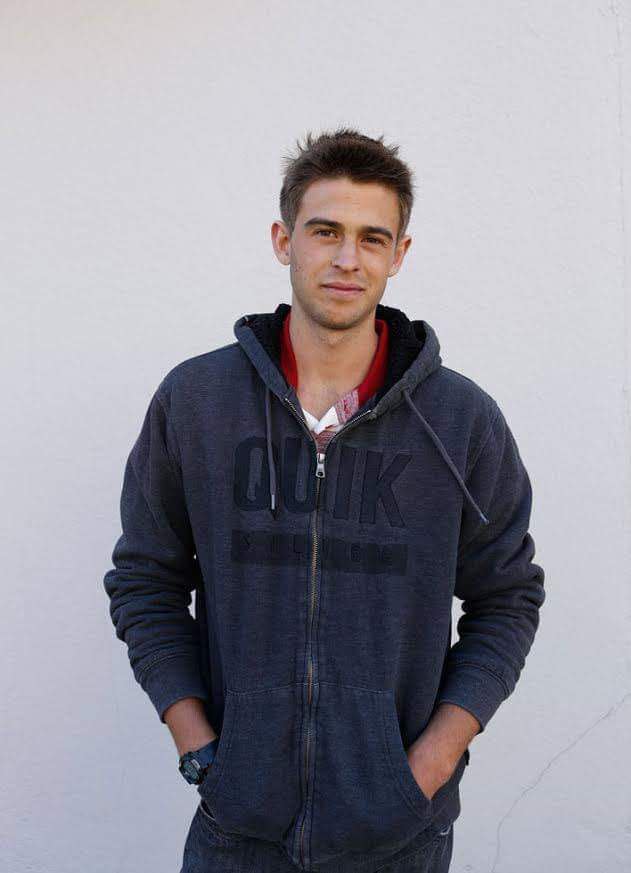
The Gray’s divorce four years prior had hit Jacob hard. Jacob’s mother Laura spoke with Jacob a couple nights before he left Port Townsend. She understood that Jacob was all geared-up for a cross-country tour to Vermont to see his older brother, Micah, who was stationed there with the U.S. Coast Guard. Jacob said he might take two years to make the trip. He figured he could do odd jobs along the way, maybe a little seasonal work as a transient organic farmhand. If that was his plan, then why would he ride west in weather, even if it was just a shakedown ride?
Rangers told Laura they had a lot going on in their park. In a place that’s 200,000-acres larger than Yosemite and sees almost four-million visitors a year, they’re terribly understaffed, with nearly two-thirds of their law-enforcement personnel having been transferred to other parks and not replaced due to 2013 budget cuts. Within a week of Jacob’s bike being found, there was also a plane crash and then another missing person in the park. They didn’t have the bandwidth to do a full-scale search.
Rangers photographed the bike, trailer and gear, then loaded everything up and locked it in a boathouse on Lake Crescent, where they took a detailed inventory. Randy dropped his hammer gun and threw his wetsuit into his truck. Rangers told him the bike was found near the river and Randy had a sense he’d be searching swift water. He picked up Mallory and sped north, driving the thousand miles from Santa Cruz straight-through. “I drove all night,” Randy said. “I got stopped going a hundred miles an hour in Oregon. I told him what was going on. He said, I’m not the last cop to not give you a ticket. Just be careful.”
Time is vital in Search & Rescue events, and it was already Tuesday by the time Randy and Mallory got to the scene, five days after rangers were first puzzled by the lonely bike. Other family members-including Laura, Jacob’s mom-and friends flew into SeaTac and drove to the park, an unfortunate occasion for a reunion. The family was surprised to find that no ranger-assisted search had been launched. National Parks operate like sovereign countries; Search and Rescue personnel from outside the park must be requested by park officials in order to search. Jacob’s bike was found less than 40 feet from the river, which was 40-feet wide at the high water mark. On the other side is the Olympic National Forest, another jurisdiction. Unlike national parks, national forests operate under the county model, and the sheriff of Clallam County, Washington, is in charge of Search and Rescue there, a stone’s throw away. The Coast Guard, based in Port Angeles, was not requested and neither were aircraft from Whidbey Island Naval Air Station, which assists with some Olympic National Park searches.
Where were the dog teams? Dog teams are almost entirely volunteer-Randy and Mallory had lined up a willing team but the park said no, they had another volunteer team in mind (that they were hesitant to request). Olympic National Park, not unlike many large national parks, opted to keep the searching in-house.
Randy and Mallory arrived at the park on Tuesday, April 11. Laura and Dani Campbell, 36, a cousin and experienced surfer who worked construction for Randi and helped renovate the Gray family home, met them-Randy and Dani suited up and got into the river. The family sensed lethargy with park officials and decided to shake the tree themselves. Elise Stokes, Jacob’s aunt who lives in Bellevue, Washington, told Ranger Wray: “We as Jacob Gray’s family demand an intense search.” She was told by Wray, Ok.
When Randy wasn’t in the water searching behind falls and in deep holes and under logjams, he bushwhacked through thick brush and thorny Devil’s club in the rain. Randy didn’t have proper terrestrial gear, and wore cotton under his PVC rain suit, so that by nightfall he was just as soaked on the inside as on the outside. He suffered trench foot from wet socks. But he never complained. And the longer he searched and didn’t find Jacob in the probable places, the better, he hoped, the chances his son was still alive.
Searching Logjams
From where the bike was found, the Sol Duc runs 78 miles to the Pacific Ocean. Swiftwater rescue experts will tell you that if he fell or jumped into the water, it’s nearly impossible that he went that far, and it’s improbable he’d flow more than a mile. It’s likely Jacob could be wearing a wool coat and canvas Carhartt dungarees. This is not an outfit you want to fall into a river wearing, but Jacob was as strong a swimmer as they come. In the water he knew when to relax and go with the current, and when to stroke like hell. There were logjams not far downstream from the bike, where he might have landed and paddled his way ashore. A person who falls into a cold river and inhales water will sink. A body-limbs and fingertips-can be caught by strainers in the river easier than you’d think, so it’s not likely he’d travel very far downstream. Eventually in cold water-three weeks, a month or so-decomposition produces gases that will cause the body to bloat and often float to the surface. “I didn’t cuss before this,” Randy told me. “Now I curse all the time. I’m thinking, Where the hell is my boy.”
Volunteer trackers from Olympic Mountain Rescue were finally requested and searched the area on Wednesday, April 12, nearly a week after the discovery of the bike. They found evidence that someone had swapped hiking boots for running shoes, walked to the river’s edge, slipped and fell in, leaving a mark on a mossy rock. Downstream thirty yards or so there were signs that someone may have scrambled out. The problem is, tracking-like so many things in Search & Rescue-is not an exact science. And in this case their conclusions were little more than a guess. A couple state fisheries biologist-not swiftwater-rescue divers-were assigned two log jams to search. Randy dived in after them to verify his son wasn’t there.
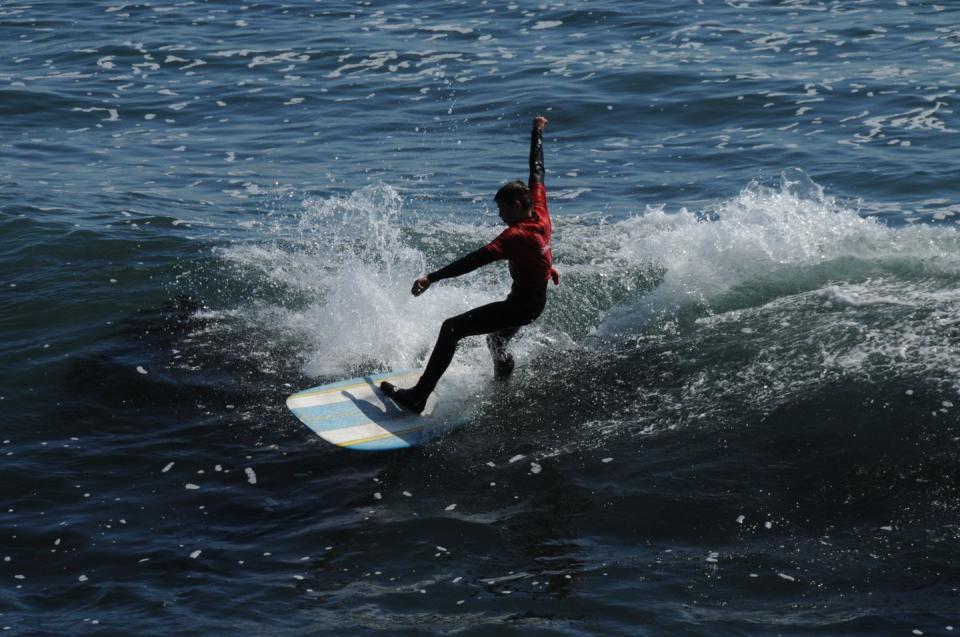
After a park-appointed dog team didn’t materialize, park-approved dogs eventually arrived and began searching at 5 pm. on Thursday, April 13, a week after Jacob’s bike was spotted. By this time it was clear they were searching for a body and not a live cyclist. Two cadaver dogs hit on a log jam, a clue. It could mean a corpse was trapped underneath. It could also mean cadaver material washed in from the bank and scent molecules swabbed the log. At any rate, it was checked myriad times-as were all the logjams in 12 river miles. Nothing.
Jacob’s older brother, Micah, is in the Coast Guard, and when the Coast Guard offered their Port Angeles-based helicopter-a five-minute flight away-they were waved off by park officials. If Jacob had indeed fallen into the river he’d have survived for less than 20 minutes in the sub-40-degree water. If he’d swam to the far bank and scrambled out, he would have quickly come to the Forest Service road used by loggers and recreators. Other than that, there just weren’t enough clues in the Park Service’s estimation to allocate more resources to Jacob’s search. “It’s beyond finding a needle in a haystack,” Chief Ranger Jay Shields told me. What about the other clues, like the claw marks on the root ball downstream? Shields, a tracker himself, puts the probability that the tracks are Jacob’s at less than five percent-myriad things could have made those marks on the bank, an otter, a beaver, a mountain lion.
Jacob’s search was termed by the Park a “passive search,” which essentially means that resources will not be allocated unless new information arises.
On Saturday, April 15, Clallam County Search and Rescue got involved and, with the help of volunteers, worked the west side of the river, on Olympic National Forest land, as well as inside the park. Fliers were tacked up on park kiosks and in gas stations in Port Angeles to the east and the logging town of Forks to the west. A pair of Burnside brand shorts in Jacob’s size was found a couple miles downstream, and he’d been given a similar pair as a Christmas gift-they’d been sent to the crime lab in Seattle for DNA testing. But until there was more to go on, searchers had other obligations. For anyone close to Jacob it seemed as if the gears of bureaucracy were grinding at a snail’s pace if they were moving at all.
Randy went back to Santa Cruz to begin closing up his successful contracting business. He would then, until fall, commute back and forth, searching the river and possible, improbable, routes higher on the mountain. Randy-as well as Laura and Peninsula friends-spent hundreds of hours hiking through snow and brush. But his search would broaden to include other possibilities.
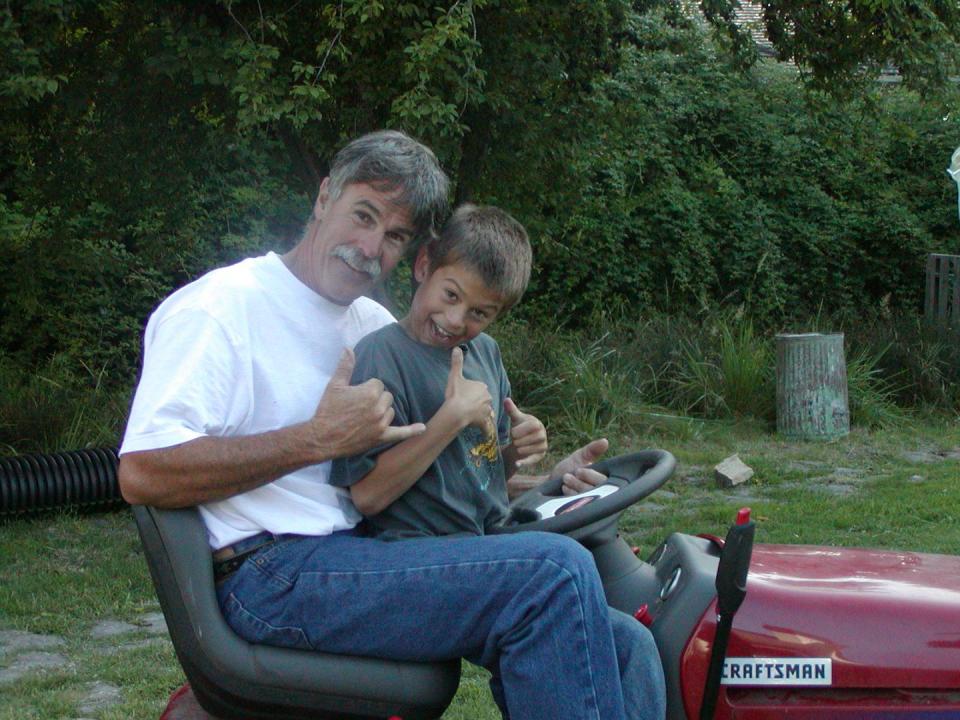
“We live in a really big strange creepy world,” Mallory said. For a year, as a teenager, she left home and lived a version of on-the-street, except it was in a tent in the redwoods. She told me Jacob-an introverted kid who struggled with the transition to adulthood-envied that move in a way. “Jacob was really lost. He didn’t know what he wanted to do in life, where he wanted to go, what he wanted to be. The state of the world had gotten him down. He sought answers in the Bible.” The Holman Bible found with Jacob’s things had Isaiah 34:14 circled: And an abode of ostriches. And the desert creatures shall meet with the wolves, The hairy goat also shall cry to its kind; Yes, the night monster shall settle there.
Mallory talked with Randy about the possibility of cults or human trafficking. Jacob is a handsome man who had done some modeling around Santa Cruz, including an audition for Disney-it was enough to know he didn’t like it and didn’t want to pursue it. Did someone feign needing help and abduct him?
Randy walked around downtown Port Angeles at 2 a.m., talking to dope addicts and street people of every stripe. There were reported sightings, but nothing proved out.
Mallory thinks Jacob left his bike and took a set of throwing knives she’d given him. And a pair of crampons for alpine climbing. A warm jacket and a backpack. “He’s a really athletic surfer-not the kind of kid who’d just fall in the river and die,” she said. He liked cold water, often preferring to trunk itwhile surfing, even in the winter.
Jacob once walked from Santa Cruz to San Francisco because he felt like walking. Jacob had called her during the walk and said he was hungry, Mallory told me. She took him some supplies part way there. Considering what was not at his grandmother’s house, and not with his gear at the bike, Mallory figures Jacob had everything he needed for a long walk.
“Anything is possible at this point,” Mallory said. But she doesn’t think self-harm is likely. “Jacob couldn’t kill a spider, let alone kill himself.”
But his family had been worried that Jacob was showing signs of mental health issues. Randy said Jacob hadn’t been himself and cites the divorce and losing the beloved home he grew up in as possible triggers. “He was having trouble adulting,” Laura said. A cross-country bike tour seemed like a good remedy, a chance for growth and change.
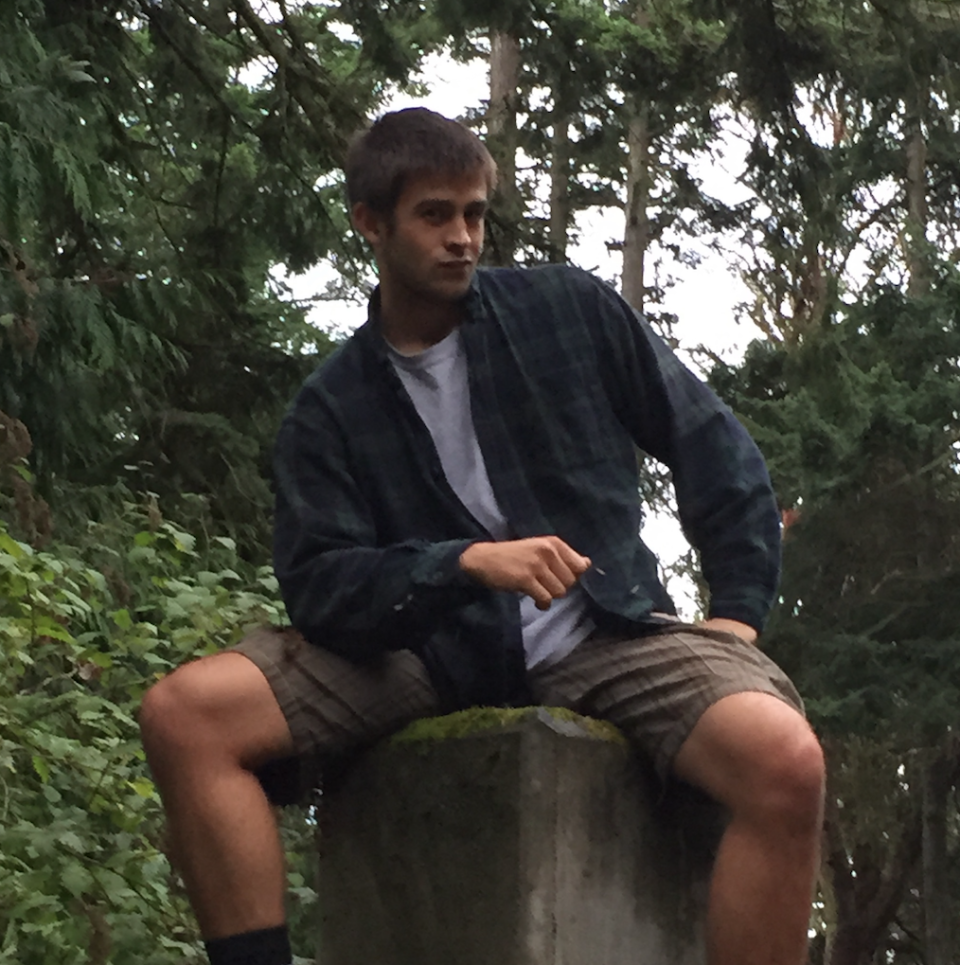
Jacob befriended Bob Chung, owner of Port Townsend Cyclery. Chung, an experienced tourer and local cycling historian who trades in vintage bikes, looked at Jacob’s setup and told him it was heavy and the frame too small, but adventure is about making do with what you have. He gave him some gloves and tuned the bike and advised him that a shakedown test-ride would be a good idea. The next he heard was that Jacob’s bike and gear were found near the Sol Duc.
The two biggest questions that remain unanswered are, after all the time he put into prepping for a bike journey, why would Jacob abandon his bike? And why wouldn’t he contact his family-his sister-like he did on the walk to San Francisco? He’d left his phone in Port Townsend.
“He’s my little brother; we’ve been through everything together,” Mallory said. “Every day I’m like, Goddamit, Jacob, just come back. Let’s get tacos.”
A Father's Mission
By the summer of 2017, Randy was essentially living on the Olympic Peninsula, still searching. He believed Jacob was still alive, on some sort of quest, and he was determined to find him. Randy sold the family home in Santa Cruz, bought a diesel Dodge dually pickup and a slide-in camper. He picked up a Cayne folding mountain bike with 20-inch knobby tires at Port Townsend Cyclery-and kept it in the truck. The small red 3-speed was handy to take on ferries when he hunted for Jacob on the San Juan Island chain. There are a dozen organic farms out there, maybe Jacob was working on one, laying low.
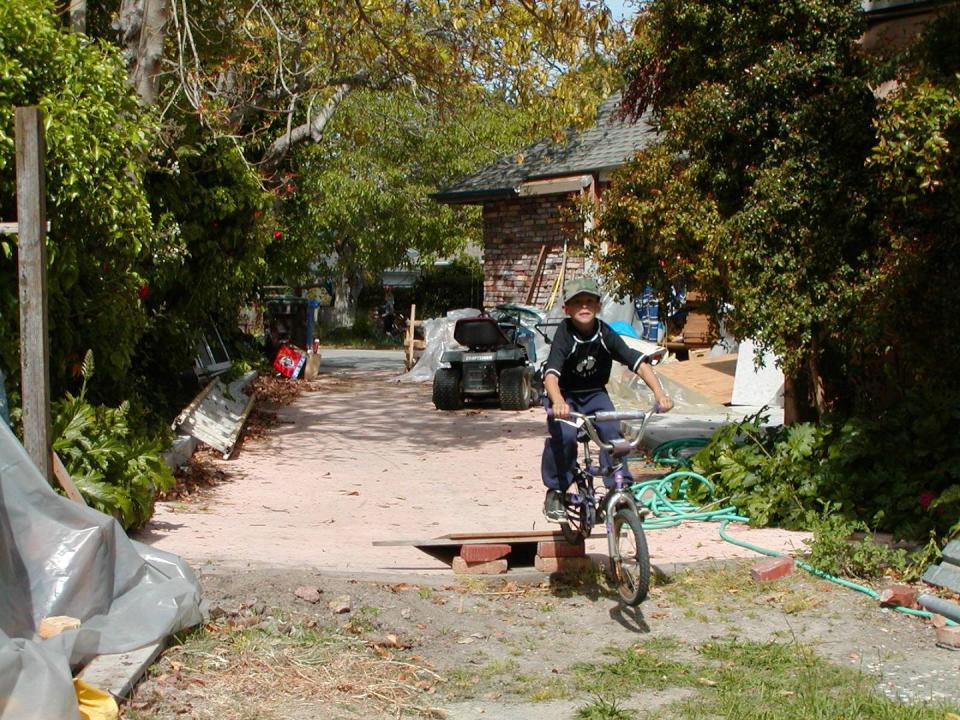
Randy returned again and again to the Sol Duc where Jacob’s gear was found. No 12-mile stretch of mountain river had been searched more thoroughly. There’s a large waterfall just upriver, Salmon Falls. One day, Randy pulled on his Santa Cruz-weight wetsuit, tied himself to a rope and knotted it off to a Sitka spruce tree. He lowered his mask and grabbed a boulder-so he could sink to the bottom-and leapt from a cliff into the pool behind the falls. Not long after Jacob vanished, Randy wore his wetsuit, snorkel and diving mask, and literally boogie-boarded the North Fork of the Sol Duc, stopping to search pools and caves. The North Fork was another unlikely place for Jacob to be, but by then most places were unlikely. Randy didn’t eat much, he drank only river water, his body was bruised all over from bashing into boulders. The search for his son nearly killed him. Living on the open road in a self-contained camper, changing parks, forests and beaches on a whim-that’s every rich man’s dream. But for Randy Gray, it was a nightmare. He lost his kid.
Boy Found
The August 2017 full moon was red because its light was being filtered through massive wildfire smoke that drifted down from British Columbia. I rendezvoused with Randy a mile from the Sol Duc River at a place called The Barn. It’s owned by a small group of Bigfoot aficionados. There are beds and a kitchen and a bar. Rifle cases, pistols, charging walkie-talkies and headlamps clutter tables. The Barn is something of a museum of Bigfoot research. There are plaster casts of giant feet and an eight-foot-tall paper mache sasquatch.
Derek Randles, who has appeared on Bigfoot reality shows, and his friends James Million and Tanya Barba, who make up the Olympic Mountain Response Team, opened up The Barn for Randy to live in whenever he was in the area. They also helped in the search for Jacob, crossing terrain off on their own maps. No one knows the river and mountains above the Sol Duc better; according to GPS tracks, the three hiked 730 miles in the search for Jacob.
This was to be Randy’s last search of the summer. I followed him into the bush, and it took everything I had to keep up with him as he crawled up riverbanks and squirreled over downed Sitka spruce logs. We walked through fresh bear scat and over the beds where they’d just slept. We were clawed again and again by the ubiquitous devil’s club that scratches through gloves and sleeves.
Randy has been doing these twelve-to-fourteen-hour days for four months.
“I didn’t plan any of this,” Randy said. “Jacob’s my buddy. You think I want to be out here searching for my son?” We were resting on a massive Western hemlock log, but not long. Randy prefers moving, because if he stops he’ll start thinking too much. “That’s the thing-you think you know, but you don’t: Where Jacob was going. What he was thinking. Where he is now.” It’s like surfing, you have to be fluid and reflexive-if you overthink, you’re in trouble.
Laura, Jacob’s mom, speaks of him in the past tense; Randy talks about Jacob in the present tense. “I’m gonna give Jacob this camper when I find him,” he told me. “He’ll love it! We can strap the surfboards on top and just live at the beach.”
“They found Jacob,” Randy told me while he was driving north, again, from Santa Cruz to the Olympic Peninsula on Sunday, August 11, 2018. It had been 16 months since Jacob vanished. In that time Randy had been back and forth, searching throughout the Olympic Peninsula, San Juan Islands, the Gulf Islands of Canada, Northern California, southern British Columbia, Vancouver Island across the Straight of San Juan de Fuca from Olympic National Park, parts of Idaho, most of Oregon and Eastern Washington. I could tell from the way Randy spoke that Jacob wasn’t alive.
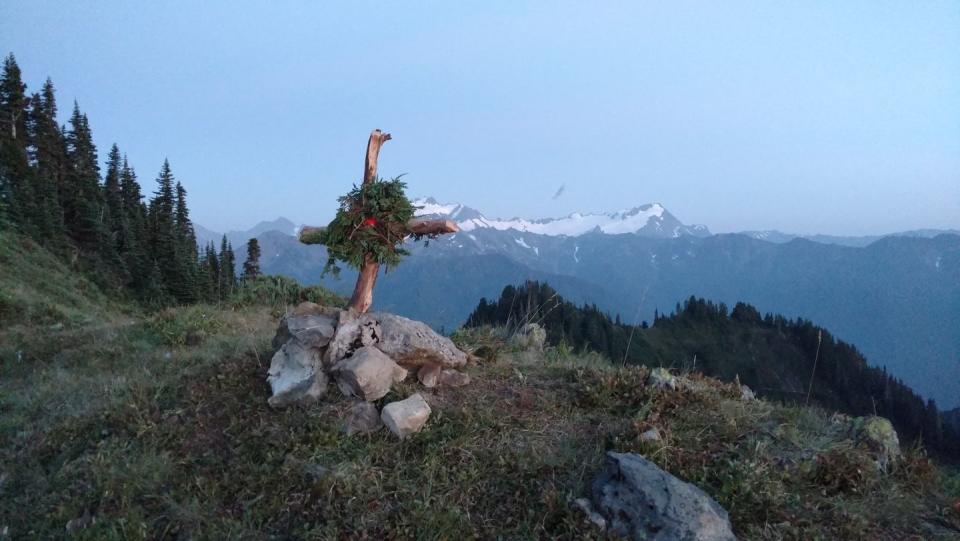
On Friday, August 10, a team of biologists who made a trip into the mountains to study marmots found Jacob’s remains, clothing, gear and wallet, near the top of a ridge above Hoh Lake, 5,300 feet above sea level and at least 15 miles from where he left his bike. His body wasn’t found near a trail; in April the terrain would have been snowy and prone to avalanches.
Ranger Wray told Randy, “Don’t go up there, let us do our job.” Wray and Randy had become friends over the months of searching and it’s clear that Wray cares about Randy. But, of course, Randy didn’t listen.
“What would you do?” Randy said. “When does a dad stop being a dad?”
Randy-who wasn’t sure of the exact location when he busted up the mountain solo-missed the rangers who were packing Jacob’s remains out. On his way down, above Deer Lake, Randy came across other rangers administering CPR to a 29-year-old woman from Iowa who had suffered cardiac arrest-he stayed and helped the rangers, taking turns with the chest compressions. One of the rangers had been part of the small team who’d just brought Jacob off the mountain. The woman died.
What happened to Jacob remains a mystery. The Clallam County Coroner’s office told me the official cause of death is inconclusive-they identified Jacob through dental records. He had a cigarette lighter and insulated clothing and plenty of food with him. He carried another bible-Laura’s father’s.
It’s likely Jacob succumbed to hypothermia, but that can be a catch-all for people who perish in the mountains. What led to freezing to death? We’ll likely never know.
Most adults tend to go down when lost in the mountains, but Randy’s hunch early on was right. “Jacob would have gone up.” Randy said.
So many questions haunt people close to Jacob. Why did he plan and tell people he was headed east, then go west without telling anyone? Why was the bike parked where it was, unlocked and in full view of traffic, with gear laid out? Why were four arrows stuck in the ground?
His family wonders if he could have been found alive if officials had gotten a helicopter in the air and dogs into the backcountry within a day or so of finding the abandoned bike? Jacob’s remains were found on a treeless ridge and might have been seen from the air.
But perhaps Jacob didn’t want to be seen.
Robert Koester, PhD, author of Lost Person Behavior, the seminal Search & Rescue manual, says, “Children will often go up. So will people on a vision quest. Depending on what message they get from God, I have seen people climb mountains.”
('You Might Also Like',)

